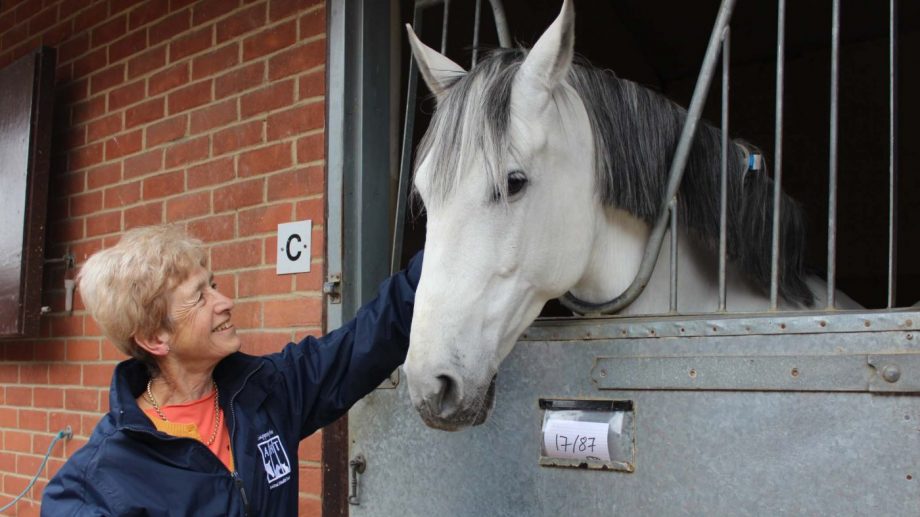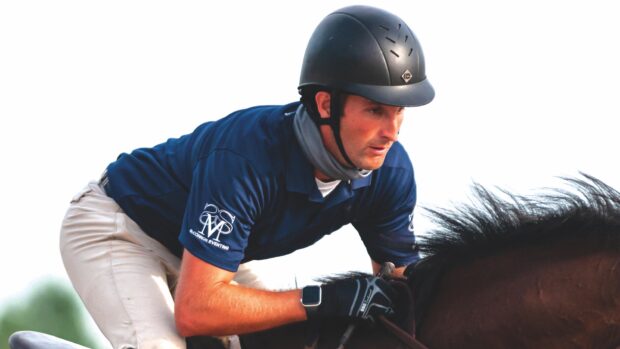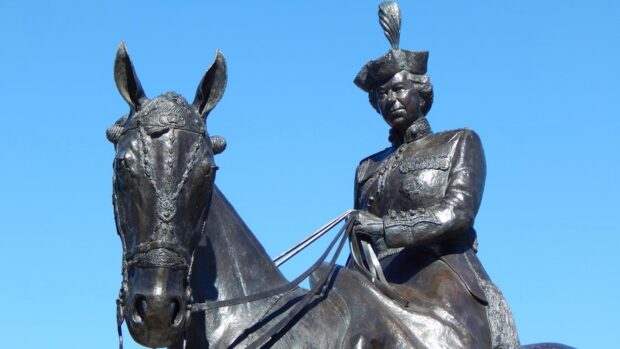Horses’ behaviour is their trying to communicate with us, and we have to listen and try to understand.
This was the message from welfare, veterinary and behavioural experts, at a World Horse Welfare webinar titled “Myth-busting: is my horse being a pain or in pain?”
Sue Dyson, former head of clinical orthopaedics at the Animal Health Trust, gave the main presentation, in which she tried to bust common myths about undesirable equine behaviour.
H&H has reported on Dr Dyson’s ridden horse pain ethogram, RHpE, which comprises 24 behaviours, the presence of eight or more of which is likely to indicate that the horse has pain.
“We have lots of myths, which I believe are not based on evidence,” she said. “They’re misleading concepts that don’t ask the question ‘Why?’ Have we lost sight of what normal should look like? To me, that’s harmony, willingness, cooperation and partnership, and I don’t think we necessarily see that all the time.”
Dr Dyson said her focus is to promote ethical and harmonious horse-human partnerships, and she believes it is important riders are familiar with how horses learn, that the “horse-rider-tack triad” is considered, and that horses are kept as naturally as possible, with friends, turnout and suitable management.
In considering some myths she has heard, she cited riders’ being told a horse drags one of both hind toes and that the horse is “lazy”, or that the rider needs to create more impulsion.
“Are we making excuses for a horse that’s actually lame?” she asked.
Dr Dyson looked at other myths including spooky horses described as “of a nervous disposition”, who could need more training or be reacting to rider anticipation but who could also be showing underlying pain; spooking is one of the 24 RHpE behaviours.
“Grumpy” horses, even if “that’s just how she is” could be communicating that they do not want to be tacked up, in anticipation of discomfort.
“In my experience, pain-free horses aren’t grumpy,” Dr Dyson said, adding that horses who do not want to go forward are also often reacting to pain or discomfort rather than being “lazy”.
Another issue is recurring gastric ulcers. If a horse has been treated for them, and is managed appropriately but is still suffering, Dr Dyson said, “they’re usually secondary to a stressor, and the most common one is musculoskeletal pain”.
Horses who “lean” on one or both hands when ridden, those who are reluctant to jump steps or downhill and those who do not want to stand at the mounting block could all be trying to tell us they are uncomfortable,” Dr Dyson said.
“Don’t always blame the horse or rider,” she added. “Be sure you know what’s normal, recognise abnormal behaviour and ask why.”
Equine behaviour specialist Rosa Verwijs joined Dr Dyson to answer questions; she said probably half the horses she is asked to see are showing pain-related behavioural issues, or their behaviour has been exacerbated by pain.
“Lots of things building up can result in the end behaviour you see,” she said. “Often behaviourists are the last port of call, and by the time we’re called out, the behaviour is quite serious, and it might be more likely it’s a pain issue.”
One question asked was about terminology used; horses do not have the ability to intentionally “be naughty”, and the experts were asked if language should be reconsidered.
“There are certainly challenging horses,” Dr Dyson said, citing one she had who reared, was retrained and went on to be an advanced eventer.
“He was challenging, but I had to understand what the problem was and resolve it. It’s unfortunate to label horses ‘naughty’ as that has bad connotations. I prefer ‘challenging’ or ‘difficult’ but it’s important to understand that multiple challenging behaviours mean it’s highly likely the horse has pain, and we need to investigate.”
Ms Verwijs said the terms owners use to describe horses reveal how they feel about certain behaviours.
“By giving horses labels, we might assume the horse feels a certain way, which might not reflect how it is actually feeling,” she said. “If we use human terms, like ‘My horse is an idiot’, it gives us an excuse, that it’s the horse’s fault and not ours, and it removes the responsibility to us to look at the problem and what it stems from.”
In terms of key messages, Ms Verwijs said: “Please listen to your horse. Behaviour is their way of communicating with us and we need to listen, and if we don’t understand, try to find the answers and learn from them. It’s really important to advocate for your horses, to look out for them, and try to give them the best life possible.”
Dr Dyson agreed, adding: “Look. See. Think about what you see, and ask why.”
You might also be interested in:

‘Pain-free horses don’t react like that’: film aims to help riders hear what their horses are saying

Behaviour assessment tool enables all onlookers to assess pain in horses
Research has found it is possible for untrained observers to assess pain and lameness in ridden horses using an ethogram

Subscribe to Horse & Hound magazine today – and enjoy unlimited website access all year round
Horse & Hound magazine, out every Thursday, is packed with all the latest news and reports, as well as interviews, specials, nostalgia, vet and training advice. Find how you can enjoy the magazine delivered to your door every week, plus options to upgrade your subscription to access our online service that brings you breaking news and reports as well as other benefits.




